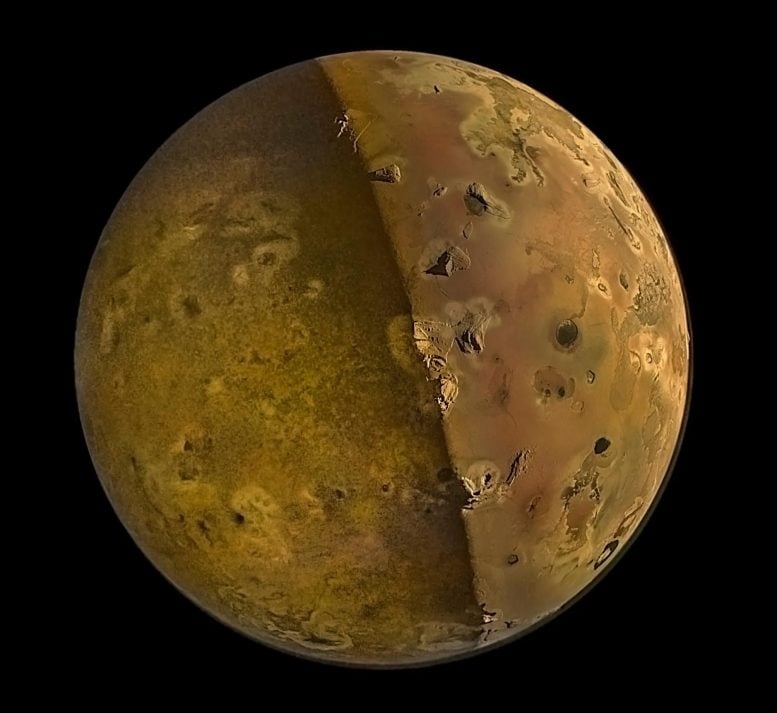
The composition of sulfur and chlorine isotopes in Io's atmosphere indicate that volcanic activity has been ongoing on Jupiter's moon for the entire 4.57 billion-year history of the Solar System. Source: SciTechDaily.com
Research involving the analysis of Io's atmosphere isotopes indicates that the moon's volcanic activity has been constant since the formation of the Solar System, influenced by gravitational forces from Jupiter and its moons.
A recent study reveals that sulfur and chlorine isotopes in Io's atmosphere indicate continuous volcanic activity throughout the 4.57 billion-year history of the Solar System, offering new insights into the moon's volcanic past.
Io, known as the most volcanically active object in the Solar System, experiences extreme volcanic activity due to internal friction caused by gravitational pulls from Jupiter and its neighboring moons, Europa and Ganymede.

Jupiter's moon Io is pictured with its night side illuminated by sunlight reflected from Jupiter, known as "Jupitershine." Source: NASA/JPL-Caltech/SwRI/MSSS, Emma Wälimäki © CC BY
Understanding the Geology Through Isotopic Measurements
The duration of Io's extensive volcanic activity remains not fully comprehended. The continuous reworking of Io's surface, due to its current volcanic activity, only leaves a geological record of the most recent million years. Stable isotopic measurements of volatile elements in Io's atmosphere may offer insights into its volcanic history.
Katherine de Kleer and her team utilized the Atacama Large Millimeter/submillimeter Array (ALMA) to study the gases in Io's thin atmosphere and ascertain the ratios of stable sulfur and chlorine isotopes in the molecules present.
Revealing Insights into Atmospheric Composition
de Kleer et al. The research reveals that both elements have a high concentration of heavy isotopes compared to the average Solar System values due to the loss of lighter isotopes from the upper atmosphere as material is continually exchanged between Io's interior and its atmosphere. These findings suggest that Io has lost 94% to 99% of its sulfur through this outgassing and recycling process, indicating that the moon has maintained its current level of volcanic activity throughout its existence.
Reference: “Isotopic evidence of long-lived volcanism on Io” 18 April 2024, Science.
DOI: 10.1126/science.adj0625



